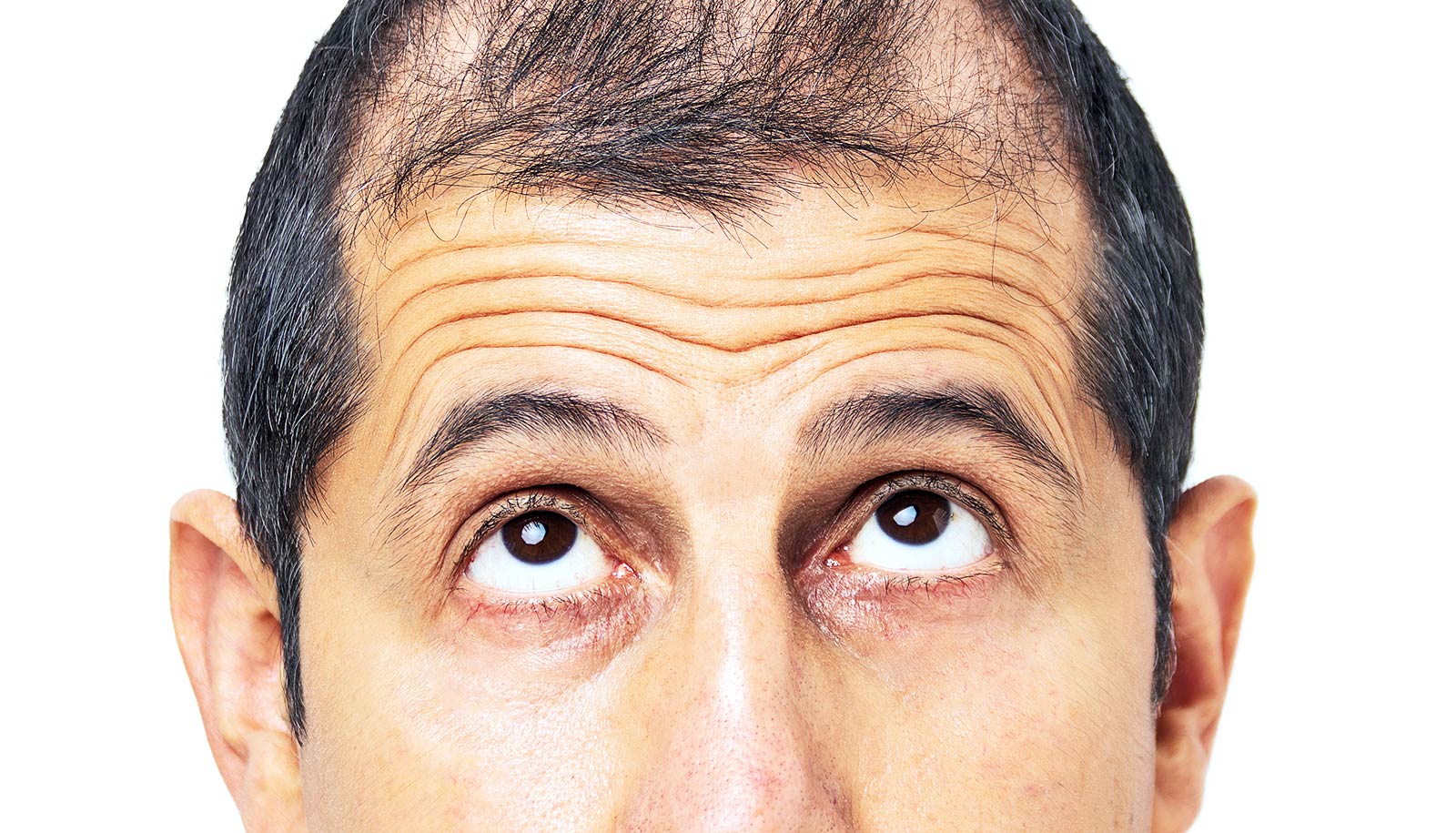
Researchers have discovered that a molecule called SCUBE3 potently stimulates hair growth.
It may offer a therapeutic treatment for androgenetic alopecia, a common form of hair loss in both women and men.
The study in Developmental Cell determined the precise mechanism by which the dermal papilla cells—specialized signal-making fibroblasts at the bottom of each hair follicle—promote new growth. Although it’s well known that dermal papilla cells play a pivotal role in controlling hair growth, the genetic basis of the activating molecules involved has been poorly understood.
“There is a strong need for new, effective hair loss medicines…”
“At different times during the hair follicle life cycle, the very same dermal papilla cells can send signals that either keep follicles dormant or trigger new hair growth,” says corresponding author Maksim Plikus, a professor of developmental and cell biology.
“We revealed that the SCUBE3 signaling molecule, which dermal papilla cells produce naturally, is the messenger used to ‘tell’ the neighboring hair stem cells to start dividing, which heralds the onset of new hair growth.”
The production of activating molecules by the dermal papilla cells is critical for efficient hair growth in mice and humans. In people with androgenetic alopecia, dermal papilla cells malfunction, greatly reducing the normally abundant activating molecules. For the work, researchers developed a mouse model with hyperactivated dermal papilla cells and excessive hair, which will facilitate more discoveries about hair growth regulation.
“Studying this mouse model permitted us to identify SCUBE3 as the previously unknown signaling molecule that can drive excessive hair growth,” says co-first author Yingzi Liu, a postdoctoral researcher in developmental and cell biology.
Further tests validated that SCUBE3 activates hair growth in human follicles. Researchers microinjected SCUBE3 into mouse skin in which human scalp follicles had been transplanted, inducing new growth in both the dormant human and surrounding mouse follicles.
“These experiments provide proof-of-principle data that SCUBE3 or derived molecules can be a promising therapeutic for hair loss,” says co-first author Christian Guerrero-Juarez, a postdoctoral researcher in mathematics.
Currently, there are two medications on the market—finasteride and minoxidil—that are approved by the Food and Drug Administration for androgenetic alopecia. Finasteride is only approved for use in men. Both drugs are not universally effective and need to be taken daily to maintain their clinical effect.
“There is a strong need for new, effective hair loss medicines, and naturally occurring compounds that are normally used by the dermal papilla cells present ideal next-generation candidates for treatment,” Plikus says. “Our test in the human hair transplant model validates the preclinical potential of SCUBE3.”
UC Irvine has filed a provisional patent application on the use of SCUBE3 and its related molecular compounds for hair growth stimulation. Further research will be conducted in the Plikus lab and at Amplifica Holdings Group Inc., a biotechnology company co-founded by Plikus.
Funding for the work came from the LEO Foundation; the Chan Zuckerberg Initiative; the W.M. Keck Foundation; the National Science Foundation; the National Institutes of Health; the Simons Foundation; the National Natural Science Foundation of China; the NNSFC’s Major Research Plan training program; and Taiwan’s Ministry of Science and Technology.
Source: UC Irvine